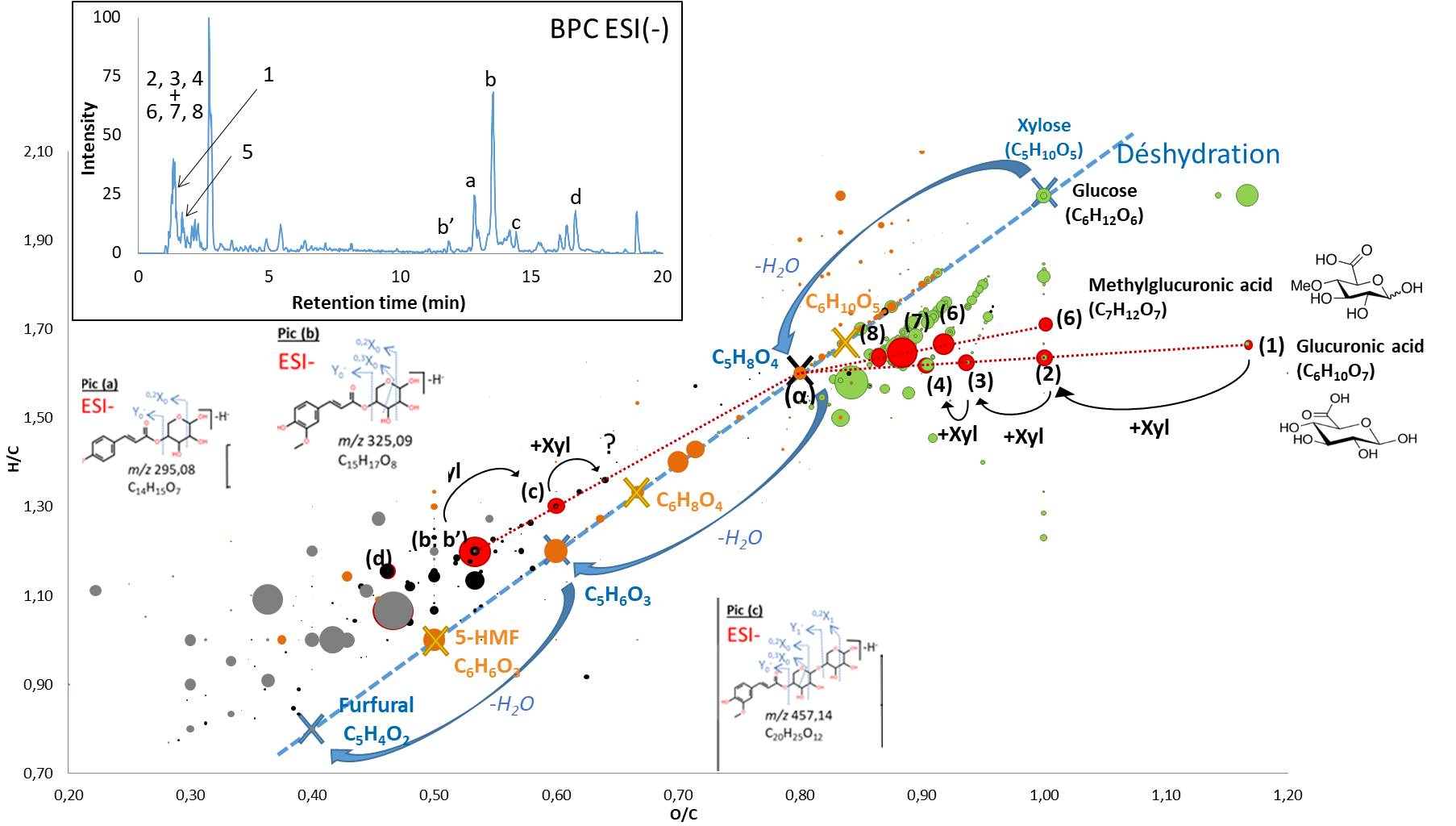IFPEN is actively involved in the development of innovative processes for the conversion of lignocellulosic biomass into bio-based fuels and molecules. However, in chemical terms, the products generated are highly complex and it is necessary to know their detailed composition in order to relate it to the reactivity observed during the conversion process.
A multi-dimensional analytical approach has been developed to conduct an advanced characterization of samples resulting from biomass conversion (figure). It combines successive liquid-liquid extractions (LLE), liquid-phase chromatography coupled with ultraviolet detection (LC-UV) and high resolution mass spectrometry (HRMS) in different ionization modes, associated with multi-stage fragmentation experiments (MSn). LLEs make it possible to organize the sample into four fractions according to the chemical family of the compounds. Each fraction is then analyzed by LC-UV/HRMSna.
As a result, original molecule structures were proposed, thanks uniquely to the simultaneous exploitation of the information obtained, such as the nature of the chemical family of the LLE fraction considered, the LC retention time, the UV spectrum, the molecular formula obtained via HRMS along with structural information provided by fragmentation experiments. For example, structures involving sugars with carboxylic acid functions and lignin-carbohydrate complexes were identified.

The information was partially concatenated using van Krevelen diagrams on which an innovative approach, based on convergence lines, makes it possible to identify unknown chemical structures detected on the chromatogram(1).
a - Combination of the different techniques, including fragmentation experiments throughout the analysis
b - Base Peak Chromatogram - ElectrosprayIionization
(1) C.Reymond, A. Dubuis, A. Le Masle, C. Colas, L. Chahen, E. Destandau, N. Charon, Journal of Chromatography A, Vol. 1610, (2020).
DOI 10.1016/j.chroma.2019. 460569
Scientific contacts: agnes.le-masle@ifpen.fr ; nadege.charon@ifpen.fr






